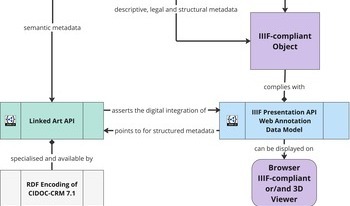
This paper addresses the concerns of the digital heritage field by setting out a series of recommendations for establishing a workflow for 3D objects, increasingly prevalent but still lacking a standardized process, in terms of long-term preservation and dissemination. We build our approach on interdisciplinary collaborations together with a comprehensive literature review. We provide a set of heuristics consisting of the following six components: data acquisition, data preservation, data description, data curation and processing, data dissemination, as well as data interoperability, analysis and exploration. Each component is supplemented by suggestions for standards and tools, which are either already common in 3D practices or represent a high potential component seeking consensus to formalize a 3D environment fit for the Humanities, such as efforts carried out by the International Image Interoperability Framework (IIIF). We then present a conceptual high-level 3D workflow which highly relies on standards adhering to the Linked Open Usable Data (LOUD) design principles.

This paper presents an online tool for heritage education that visualizes large-scale digital architectural data of the Roman Forum in Rome, Italy. Leveraging Potree and WebGL, the tool enables the web-based visualization of registered point cloud data as the base framework for the context and the reconstructed geometries with mesh models wrapped with images of standing monuments as the focus. The tool enables users to overview the entire heritage site and examine the fine monument details. The 3D reconstructed mesh and surface models are built to allow users to explore and study the site as it exists today in relation to its reconstructed views. The site is tagged with historical information and imagery for further referencing. The paper concludes with a report on visualization results and an ad-hoc evaluation provided by domain experts.